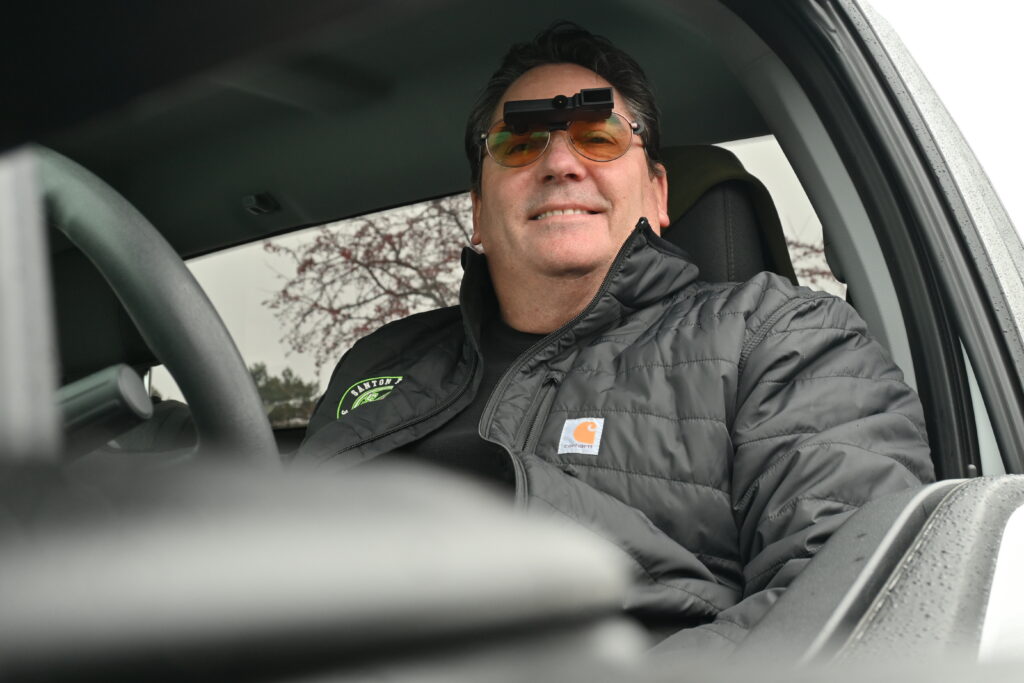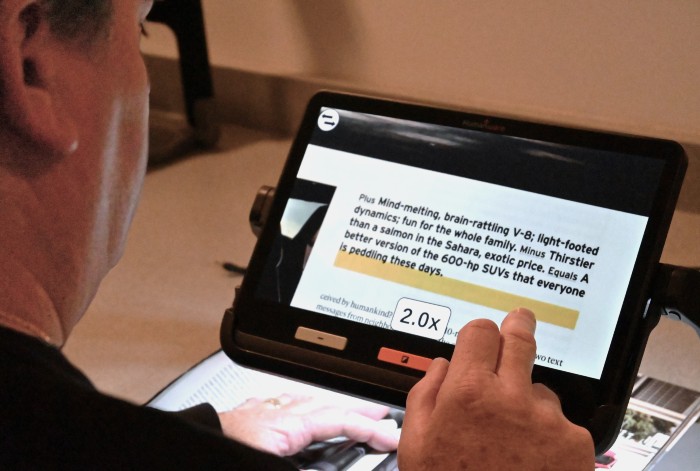High school baseball can be a life-defining moment for some, but for Youngstown resident Ed Emerick, a game defined his life in an unexpected way. As the sun came down over the stadium, Ed stood in the outfield with an open glove waiting for action. At the mound, a pitch is thrown, and the batter sends the ball high. Ed readies himself to catch the ball but loses the trajectory as it returns to Earth.
Ed couldn’t see the ball.
The batter didn’t hit a home run, rather, Ed was experiencing symptoms of retinitis pigmentosa: a genetic condition that causes cells in the retina to slowly break down over time, bringing about vision loss. It’s a disorder he also shares with his grandfather, brother and his two cousins, and a condition for which the Judith A. Read Low Vision Services at UDS was able to provide support.
“Low Vision Services is the only reason I’ve been able to successfully remain employed in a very good career,” Ed says. “I’d say there is no way for me to know where I’d be if it wasn’t for the clinic and Opportunities for Ohioans with Disabilities (OOD).”
Looking through the Fog
Ed compares his vision to someone driving through fog in the daytime. “Glare for me is huge,” he states emphatically. In addition to influencing his peripheral vision, Ed experiences central vision loss and his eyes have problems responding to light. His reaction to light requires him to keep several pairs of sunglasses in his big Ford pickup, as different levels of glare require a variety of lenses to protect his vision.

Originally an electrician by trade, Ed found himself retreating to an office position helping teach apprentices as his condition worsened. In his younger days Ed was able to undergo Lasik surgery—something he would not be a candidate for today. Though the operation provided momentary relief, the surgery eventually caused his corneas to collapse, requiring specialty contact lenses to correct the issue.
Ed maintained his jovial attitude despite the challenges of living with a vision impairment, but he also knew when it was time to get serious about finding a new solution. That’s when OOD and Ed’s vocational rehabilitation counselor in Youngstown suggested he visit our Low Vision Services located in Akron.
Delivering Technology
Low Vision Services taps into the self-proclaimed “tech-geek” within Ed, supporting him with a variety of aids and assistive technology paid for by OOD.
For those with retinitis pigmentosa, the chances of continuing to drive are low. Fortunately for Ed, his condition is as unique as he is, giving him just enough vision to rely on the Ocutech 6x Sport II Bioptic Lens for driving. Think of the device as turbo-charged bifocals. With it attached to the top of a pair of glasses, it allows Ed to focus better on streetlights and signs along the road and helped him to obtain a special driver’s license through the state of Ohio. Not everyone with a visual impairment is a candidate for the bioptic driving program. Individuals must meet specific vision requirements and pass a challenging and comprehensive test administered by an Ohio driver’s license examiner for both day and nighttime privileges.
“I will tell you one thing, and that’s if you learn nothing else, you will learn to pay attention to signs when you’re driving with a bioptic lens,” Ed says as he cleans his sunglasses. “I think bioptic drivers are safer than most drivers.”
When he’s not in the driver’s seat, he uses a smaller monocular lens, capable of capturing road signs and highway exits to help his wife navigate while they drive to the Ohio River with his beautiful boat in tow.

Ed also uses tech to achieve work-life balance. One notable improvement would be his closed-caption television, or CCTV. His original CCTV took up the entire space under his desk at work, whereas his Humanware Explorē 12 is roughly the size of an iPad. The Explorē 12 allows Ed to freely read wherever he feels comfortable, offering mobility and convenience over his massive CCTV.
Additionally, the MyEye by OrCam gives him the best of both worlds. A device that attaches to his glasses like the bioptic lens, the MyEye is capable of viewing text or objects and relaying the information to Ed audibly, allowing his eyes a chance to rest without missing critical information.
Thanks to Low Vision Services, Ed sees life in a whole new light.
For those hesitant to pay a visit to Low Vision Services, Ed has this advice: “Be honest about your visual issues and don’t assume you know what all your options are and what visual aids may be of benefit. Let the pros guide you through the process.”
If you’re interested in learning more about any of the services provided by the clinic or its large selection of low vision aids and assistive technology, call 330-762-9755 or visit us online at our Low Vision Services webpage. You may also want to consider making a donation.